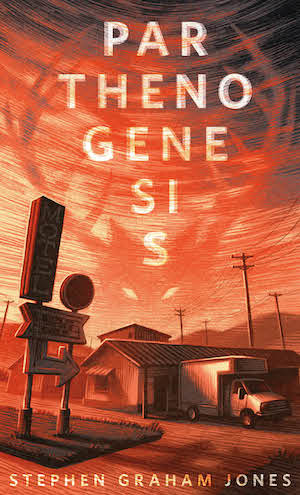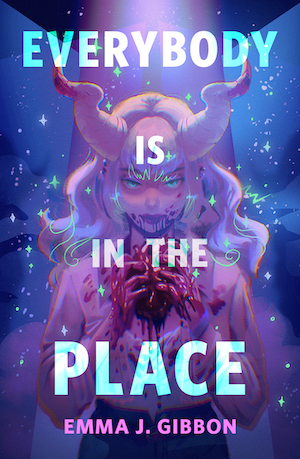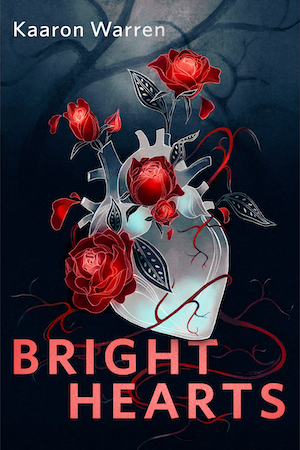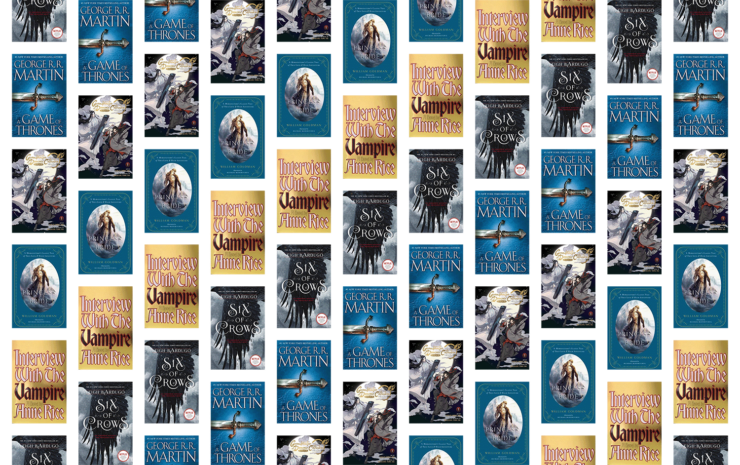I love a villainous team. And as you can see from my book, a love letter to fantasy and to the readers longing for escape into the magic and danger of other worlds, I love a fantastic setting.
I also love picking favourites. Just as a wicked hobby. So without further ado, I give you my five favourite fantastic villainous team-ups of all time, who have delighted, horrified and inspired me. For the record, none of my characters are based on any others, but all these books are asking questions and sensing wonders in a way that made me want to do that too.
“By definition, there was only one fairest of them all, but it was different for villains. This world was against them. So they should conspire together.” —Long Live Evil
The Princess Bride by William Goldman

What, the merry band of adventurers who ultimately free the princess and reunite the hero and heroine? How dare I!
Villainously, I dare anything… as long as I can do so from a place of safety (behind this computer screen). You might say Westley’s team are a force ultimately for good, and sure, that’s technically true, but hear me out: (A) while I love Westley, he is a pirate, raised up into becoming the Dread Pirate Roberts by a man who tells him ‘I’ll probably kill you in the morning’ every night. He’s also one of the world’s greatest swordsmen. I don’t think it was all sunshine and daisies upon the high seas. (B) Let us recall how we meet the other members of the band, Inigo Montoya and Fezzik. They are doing henchmen thug things. They are kidnapping Buttercup and they do not have her best interests at heart!
Inigo is also on a mission of revenge, which is a classic path for both a villain and an antihero. (The difference lies in the PR.) And Inigo doesn’t turn aside nobly at the last moment. “You killed my father. Prepare to die.” Prepared or not, his target dies. To be clear, I back Inigo 100% on this decision. That’s what you get for killing his father – but that’s not often the heroic choice.
The Princess Bride is also a love letter to stories, and the way we interact with them—it has a wicked plot, and one of the most fun things about the book version is that it pretends to be a translation of the story in another language, by S. Morgenstern… with the boring bits cut out. So many people asked to read the version that never existed, because when you really love a story, you want more.
Books like this one, and teams which sail right through villainy, taught me what I wanted my book to be: sincere as well as funny, an immersive love song to fantasy adventure as well as an affectionate parody. Always capable of being two things at once. Like Westley the dread pirate, and Inigo and Fezzik the henchmen. Like most people.
Six of Crows by Leigh Bardugo

I read Six of Crows before it was published, and after I read it, I ran into the bedroom of a friend who was also a writer, closed the door, and screamed my head off. “Are we allowed to do this?” I demanded of the air as well as my startled friend. “I didn’t know we were allowed to do this!”
In a world of serious, universe-upending magic, the criminal crew of Crows who live by their wits feel like real, true underdogs—not people who win all the time whom we’re meant to consider underdogs. And they’re going to do genuinely terrible things to survive and to thrive. At the same time, the Crows are undeniably cool, all the cooler because they’re not the chosen ones. They must seize what they need from the remorseless jaws of destiny.
Kaz, their leader, is mercenary and vengeful. Jesper has a gambling addiction and a secret behind his sharpshooting. Inej is known as the Wraith for good (or bad…) reason. Nina manipulates people with her powers and cheerfully eats waffles about it. Matthias is genuinely prejudiced against Grisha and does and says terrible things to them. Wylan’s keeping just as many secrets as Jesper. Even their skills come at a hard-won price.
We’ve seen many characters of humble origins destined for greatness, farm boys and heroes emerging from the wilderness, but fantasy exploration of the urban lower classes, and the literalisation through magic of the power aristocrats can wield, is a compelling tale I want to see more of. Kaz, the leader of the Crows, is also a lesson in how precisely and effectively you can drop backstory—the shadow that trails behind a character, the story that tells you who they are. Kaz’s origin is unflinchingly relentless and miserable, yet also low-key, a tale that might have happened to a thousand people and brought them all down—but not this person. Once we hear his story, we understand the willpower and determination he needed to take that story and use it to transform into The Bastard of the Barrel.
And so, my villains—an assassin from the gutters who may be the most skilled killer in the world but can’t save up enough money for something he badly wants, a ladies’ maid proficient with both hairstyling and an axe, a treasonous harlot, and a playboy playwright spymaster—owe Leigh Bardugo a lot. As does a great deal of recent modern fantasy.
The Grandmaster of Demonic Cultivation by Mo Xiang Tong Xiu
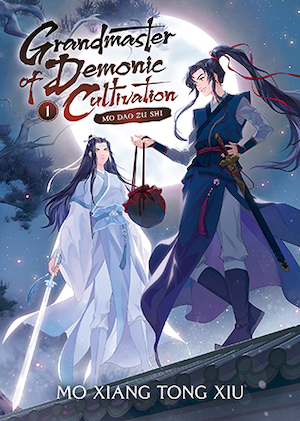
All cultures have portal fantasies, the idea of a door opening into other worlds or the past or into art.
I love that becoming part of the art, being able to go into and change the story, is such a universal dream and desire. Isekai (which literally means other world) is a subgenre of portal fantasy, in which the tropes for going into that other world, or into your own past life, are refined to an art.
I’d watched the Korean dramas Extraordinary You, and W: Two Worlds (itself inspired by the Take On Me music video by the Norwegian band A-ha, because literary inspiration is an ouroboros), and the Chinese drama The Romance of Tiger and Rose, so I’d absorbed those tropes in a roundabout way and was inspired by them when writing Long Live Evil, but when I told a friend the plot of the book I’d just written a first draft of, she told me I had to read some proper isekai immediately.
I started with Mo Xiang Tong Xiu’s Heaven Official’s Blessing, which was an error as… it isn’t isekai… (a classic Sarah blunder). Then I read the Grandmaster of Demonic Cultivation, in which a notorious evil necromancer gets a second chance at life. You often travel into the past in portal fantasy, as in Outlander, and in isekai, it’s often into your own past. And the band of villains I wish to celebrate today actually come together in the necromancer protagonist’s first life.
What do you do in an epic fantasy when the evil army of evildoers attacks? You slaughter the evildoers down to the last man! Okay, but even those who can’t or don’t fight? Even the old and the children? Wait, hang on, is this behaviour heroic at all? The protagonist of the novel, Wei Wuxian (who’s also taken to necromancy for sympathetic and understandable reasons but it’s certainly bad optics) realises that his own side—the aggrieved side of good in the initial conflict—has decided to carry out said slaughter of unarmed prisoners.
So he gathers up the remnants of the side of evil, and goes to live in the Burial Mounds full of horrors with a little child and several elders. Plus Wen Qing, a possibly-mad magic-scientist doctor lady and her very mild-mannered murderous resurrected corpse brother, Wen Ning, both of whom previously aided Wei Wuxian in his time of need. Many consider necromancy morally dubious and incredibly creepy (thought: does Westley count as mostly a zombie?), but if someone who had helped you was piteously done to death, and you could raise him, wouldn’t you? If you want to talk heart-warming found family, this is it. But of course, it’s doomed.
Most villains are doomed. By the narrative. One reason Long Live Evil is an adult fantasy is the awareness that you’re not the hero of the story, and you might be doomed to fail, is a very adult feeling. But still, we try. We make terrible mistakes. We commit acts that are great sins to others, yet that are the only deeds we could do and still live with ourselves. History is written by the victors – just as we know why the real man Richard III became a compelling villain in Shakespeare’s play, we understand why Wei Wuxian became a famous villain in the narrative of his first life. And our understanding of narrative unfairness means we all hope for, and so rarely get, a second chance.
A Song of Ice and Fire by George R.R. Martin

We’ve all heard about found family, but what about the evil family you’re unfortunately born with? Starks and Targaryens have their appeal, but I pick the Lannisters.
Hear me out, okay, hear me out! The Lannisters sweep onto the scene and almost immediately are outlined as a classically villainous family—scheming, arrogant, blond, engaging in rather shocking sexual behaviour. The Kingslayer, the Imp, the evil Queen. Then it gets complicated.
Never have I better understood the phrase “Evil is a point of view” than when I once saw on Facebook a lady lamenting the Red Wedding and saying “Who will defeat the Lannisters now!” The reply was “What, Tyrion?” The lady: “Oh no, I love Tyrion, he’s so funny.” Reply again: “So Jaime?” The lady: “No, Jaime’s really grown on me and he’s very handsome…”
That’s half the Lannisters she wanted safe from retribution, including the one who threw a kid out a window. I love Jaime Lannister personally, but as you can all see, my morals are dubious at best. Still, as anyone with a family knows, family is complicated. Evil family is even more complicated, and in the Song of Ice and Fire books, all the characters are infinitely more complicated than they were on the show. And they are a family, a complex interconnected web of love and resentment. Sometimes love corrupts you (“The things I do for love,” says Jaime, throwing a kid out a window) and sometimes the very same love saves you (feverish and maimed, this mantra lets Jaime cling to life: “Live for Cersei. Live for Tyrion. Live for vengeance.”) Inigo Montoya would have understood. Long live strange love with an edge like a knife, says I.
Yet like all villains, the Lannisters do seem doomed. If Tywin had died in the Battle of the Blackwater, if Cersei had never heard the prophecy, perhaps it would be different. That’s the most tragic thing about tragedy, of course, that it might have been different.
Tyrion Lannister, a character inspired and subverted from Shakespeare’s Richard III, has been my favourite ASOIAF character from the first time I read A Game of Thrones twenty years ago. When reading Jaime’s speech in A Clash of Kings, and his point of view in A Storm of Swords, I realised Jaime, a man with one of the most villainous introductions of all time, was going to get what I refer to as the Lestat de Lioncourt treatment: a minor villain transforms into a runaway fan favourite.
I love A Song of Ice and Fire, which has inspired millions who wish to enter a world of epic fantasy, as my protagonist does in Long Live Evil. I especially love its complex feelings on romantic ideals that helped inspire one of my characters, who’s trying really hard to be an Arthurian knight in the face of all this villainy, and yet… what is a knight? (“So many vows. They make you swear and swear.”) That love, whether it’s a corrupting or redeeming love or both, started with the Lannisters.
Interview with the Vampire by Anne Rice

Speaking of Lestat de Lioncourt… since everybody likes the found family trope, let’s talk Interview with the Vampire.
A villainous found family: when an evil vampire finds you, turns you into a vampire and then babytraps you with an immortal six-year-old. Not all found families are heart-warming.
Lestat, Louis and Claudia. The Unholy Family. We are first introduced to them by Louis, the melancholy vampire who regrets the suffering of mortals, regrets being seduced into a lifestyle of immortal blood-drinking by the far more brash and cheery Lestat. And yet, Louis loves his vampire daughter, and as the series progresses, he finally admits he loves Lestat too.
Though you might not suspect that from Interview with the Vampire. I didn’t. I was puzzled that the second book was titled The Vampire Lestat, after the minor villain. Then the top of my head came off, plunged into Lestat’s point of view, which is a wild ride—and in which it’s clear from the very start that he loved his family. Even though they are all, objectively speaking, horrible monsters.
“He (Louis) told the truth about the eerie contentment he and Claudia and I shared and had no right to share in those long nineteenth-century decades when the peacock colors of the ancient regime died out and the lovely music of Mozart and Haydn gave way to the bombast of Beethoven, which could sound at times too remarkably like the clang of my imaginary Hell’s Bells. I had what I wanted, what I had always wanted. I had them.” —The Vampire Lestat
I had “Evil is a point of view” on my wall as a child. (Yes, I was a creepy kid.) The Vampire Chronicles taught me that who you sympathize with depends very much on who is telling the story. It started me along the road of doubting the histories I was told. It gave me a lifelong love for unreliable narrators. And it taught me to spin pain into art, like straw to gold.
Claudia, the vampire child, the centre of the Unholy Family. She was dead from the beginning. Anne Rice wrote the first book after the death of her own daughter at six, and her narrator’s pain at living on for so long was her pain transformed. I had and survived late-stage cancer, and escaped pain many times into stories. And so in Long Live Evil, a dying woman walks into a story—but it’s more complicated than that. Love always is. So is evil.
So, that’s five villainous teams. If I was allowed name more villainous teams I might also wish to talk about Gregory Maguire’s Wicked, and Scott Lynch’s The Lies of Locke Lamora. I realise even including this addition is cheating. You may note my book isn’t called Long Live Playing Fair.
Join me in evil. Let’s be a team.
Buy the Book


Long Live Evil


